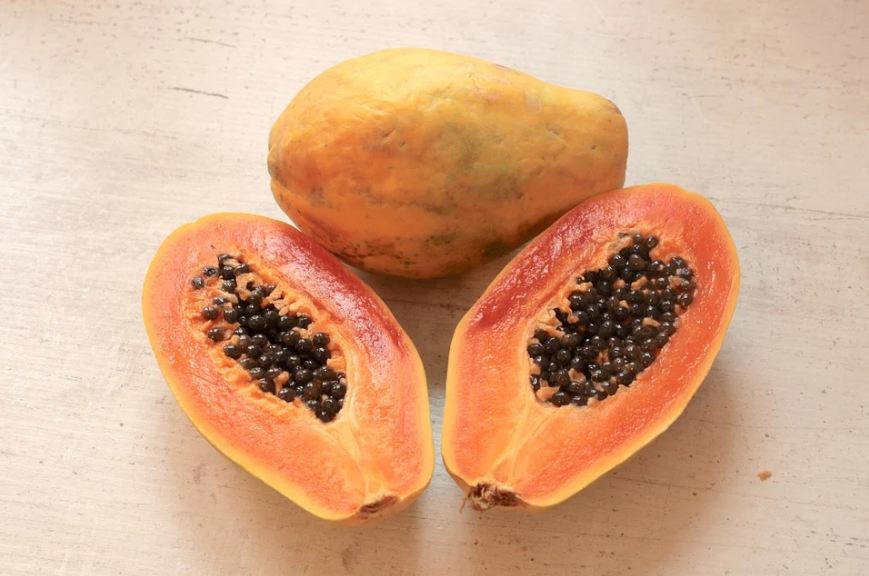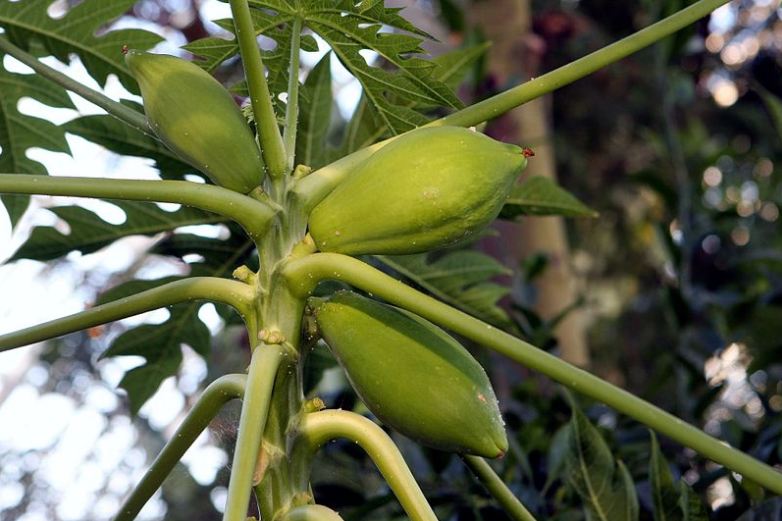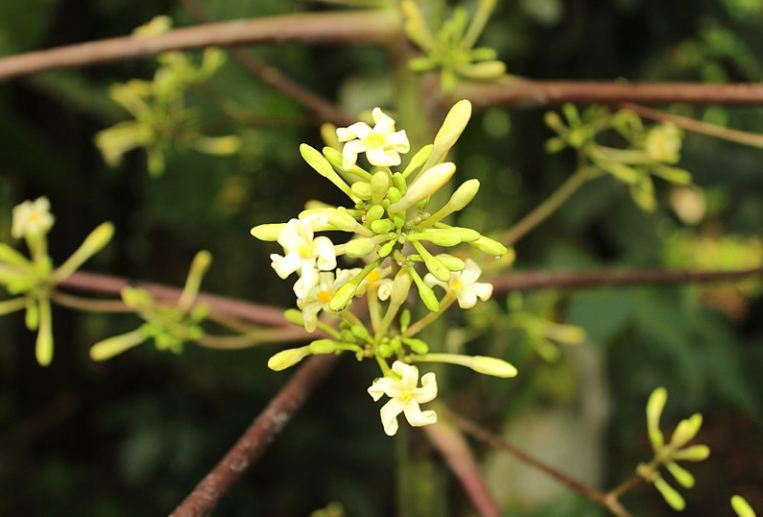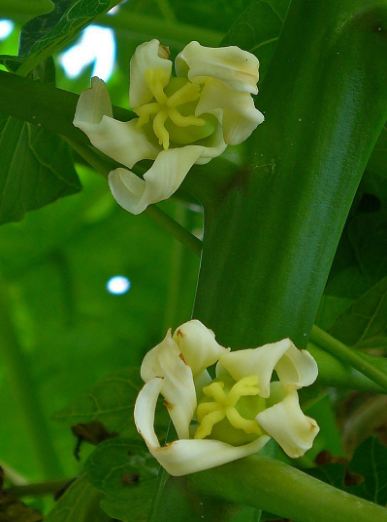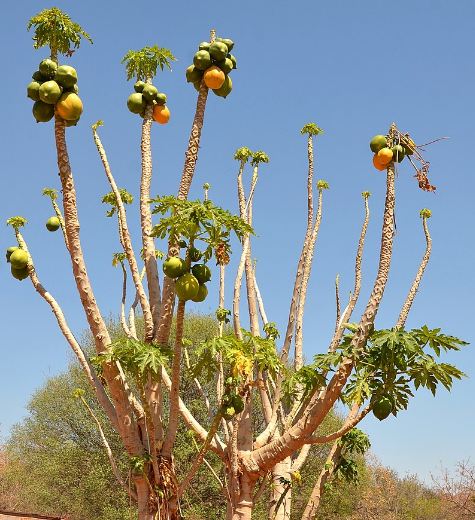Carica papaya is a tropical plant commonly found in Central America, Southeast Asian countries like India, Malaysia, the Philippines, and Australia. Its leaves are for treating fever, pyrexia, diabetes, gonorrhea, syphilis, inflammation, and dressing for nasty wounds. Several reports have proven that Carica leaves contain many bioactive agents like carpaine and nicotinic acid.
The Carica’s ethanol extracts and their anti-inflammatory activity were confirmed in rats in the standard carrageenan-induce paw edema, cotton pellet granuloma, and formaldehyde-induced arthritis models. Ethanol extracts have proven to contain things like saponins, cardiac glycosides, anthraquinones, and reducing sugars in addition to flavonoids, alkaloids, and tannins.
The alkaloids, flavonoids, saponins, tannins, and glycosides with anti-inflammatory properties are mainly responsible for their beneficial effects.
Origin of Carica Papayas
Carica Papayas originated from Mesoamerica in Southern Mexico. The natural distribution of these papaya ranges from Mexico’s northern tropical limit to Costa Rica in Central America. But somehow, the accurate assessment of its natural distribution is still lacking.
One of the reasons for this is the lack of studies in papaya’s wild population and lack of information about herbarium specimens indicating whether the model belongs to a cultivated or wild individual.
Genders of Carica Papayas
Carica Papayas grow in three genders: male, female, and hermaphrodite. The male papaya only produces pollen, and it never makes food. The female papaya has small fruits that are inedible unless pollinated.
The hermaphrodite plant is capable of self-pollinating as its flowers contain both male stamens and female ovaries. Almost all of the commercial papaya orchards are only hermaphrodites.
Cultivation of Carica Papayas
These Carica papayas originated from Southern Mexico, Central America, and northern South America. And now, they are cultivated in almost all tropical countries. Carica papaya grows and bears fruit in 6 to 10 months, depending on the climate, region, season, etc. But for some reason, it is susceptible to frost, which limits its production during tropical climates.
Temperatures below 29ᵒF are very harmful to them. In countries like Florida, California, and Texas, their growth is only limited to these states’ southern parts. You should have sandy, and well-drained soil for these plants as the standing water can kill them within 24 hours.
Cultivars
Two kinds of Carica papayas are commonly grown. One is sweet and has red or orange flesh, and the other one has yellow flesh. In Australia, these papayas are known as “Red Papaya” and “Yellow Papaya.”
The papayas that are large-fruited and red-fleshed known as ‘Maradol,’ ‘Sunrise’ and ‘Caribbean Red’ sold in United States markets are mostly grown in Mexico Belize.
Genetically Engineered Cultivars
Carica Papaya is known as the first transgenic fruit tree to have its genome in sequence. When the papaya ringspot virus spread in Hawaii in 1998, the genetically engineered papayas were approved and brought to the market, including varieties like sunup and rainbow. The types of fruit resistant to PRV have DNA of the virus included in the plant’s DNA.
Uses of Carica Papaya
Edible Uses
According to a study done by CsCanada,Carica papayas have many edible uses, and you eat them raw as fruit or cook them. They are rich in vitamins, have a hard creamy texture, and a sweet flavor that resembles melon and apricot taste. It is a tasty and versatile fruit that you can preserve or dry, cook in pies, and make into jam, ice cream, jellies, sherbets, etc.
You can also eat this immature fruit as a veggie by either baking or boiling it. Moreover, you can use them to make chutneys, jams, or add to vegetable soup.
Medicinal Uses
According to a study by a Federal University of MatoGrosso do Sul-UFMS, the skins, leaves, saps, and seeds of the immature Carica papayas are all enzyme papain sources. They also work as a digestive stimulate and help in the digestion of protein. The unripe Carica papayas are especially a good source.
You can use papain internally, especially in the extracted form, to treat digestive disorders. You can also apply it externally on your body to make the healing process of the wounds faster.
Helps in Lightening Facial Hair
According to a research study by the Indonesian Institute of Sciences and the University of Pancasila, Carica papayas help lighten the facial hair. The enzymes present in these papayas weaken the hair follicles and lighten the facial hair. The regular use of these papayas can also prevent the re-growth of facial hair.
You can use a Carica papaya by blending it raw into a paste and mixing a half cup of it with half a teaspoon of turmeric powder. Then, mix it and apply it to your face as a mask. Once the mask dries, scrub it off and wash your face with warm water. It is best to repeat this practice once a week to lighten your facial hair.
Helps in Hair Nourishment
According to a study done in Egypt and Japan, Carica Papayas are enriched with vitamins and minerals. Moreover, they help in boosting hair growth and strength. If you want to add volume to your hair and give it a shine, you can use papaya hair masks. The protein present in papayas can also help in reducing split ends.
To make a papaya hair mask, you need to mix one cup of fully grown papaya, a fully grown banana, and a little yogurt. Once done, add one tablespoon of coconut oil to this paste, mix it well, and apply it to your wet hair.
Helps on Getting Rid Of Dark Spots
Carica papayas can also help lighten up the skin spots and remove skin tan (study). It doesn’t matter whether you have acne spots or dark elbow and knees; you can use papayas as they are an excellent remedy for darkened skin spots. These papayas also help in improving skin tone and complexion.
To use them for removing dark spots, mix raw papaya and take one-fourth cup of paste in a bowl, then add a half tablespoon of honey and one tablespoon of freshly squeezed lemon juice. Once you are done, apply it to the infected area and once it becomes dry, wash it with cool water.
Helps in Improving Heart Health
According to a study, Carica papayas help improve heart health. So if you have heart problems, you can add them to your diet. The antioxidants present in papaya can help protect your heart and improve the protective effects of “good” HDL cholesterol. Some studies prove that fruits that are high in lycopene and Vitamin C can help in preventing heart disease.
Powerful Antioxidant Effects
Carica papayas contain antioxidants like carotenoids that help in neutralizing the free radicals. A study suggests that these papayas can reduce oxidative stress in older people, prediabetes, mild hypothyroid,and liver problems. Researchers also believe that many free radicals in the brain are a primary factor in Alzheimer’s disease.
Helps in Preventing Cancer
Carica Papayas have anti-cancer properties and help in preventing cancer. That is why researchers say that the lycopene in papaya can help in reducing the risk of cancer. Papayas reduce the free radicals in our body that lead to cancer.
For more information, click here.
Carica Papaya – A God’s Gift
Carica papayas are tropical plants that are found in Central America and South Asia. These papayas have many benefits, including heart improvement, skin enhancement, and several edible and medicinal uses.
It is best to use these papayas regularly in one way or another. For instance, you can eat it raw, cook it, apply it to your skin and hair, etc. These papayas are one of the great gifts of nature, and you should take advantage if you have them.

